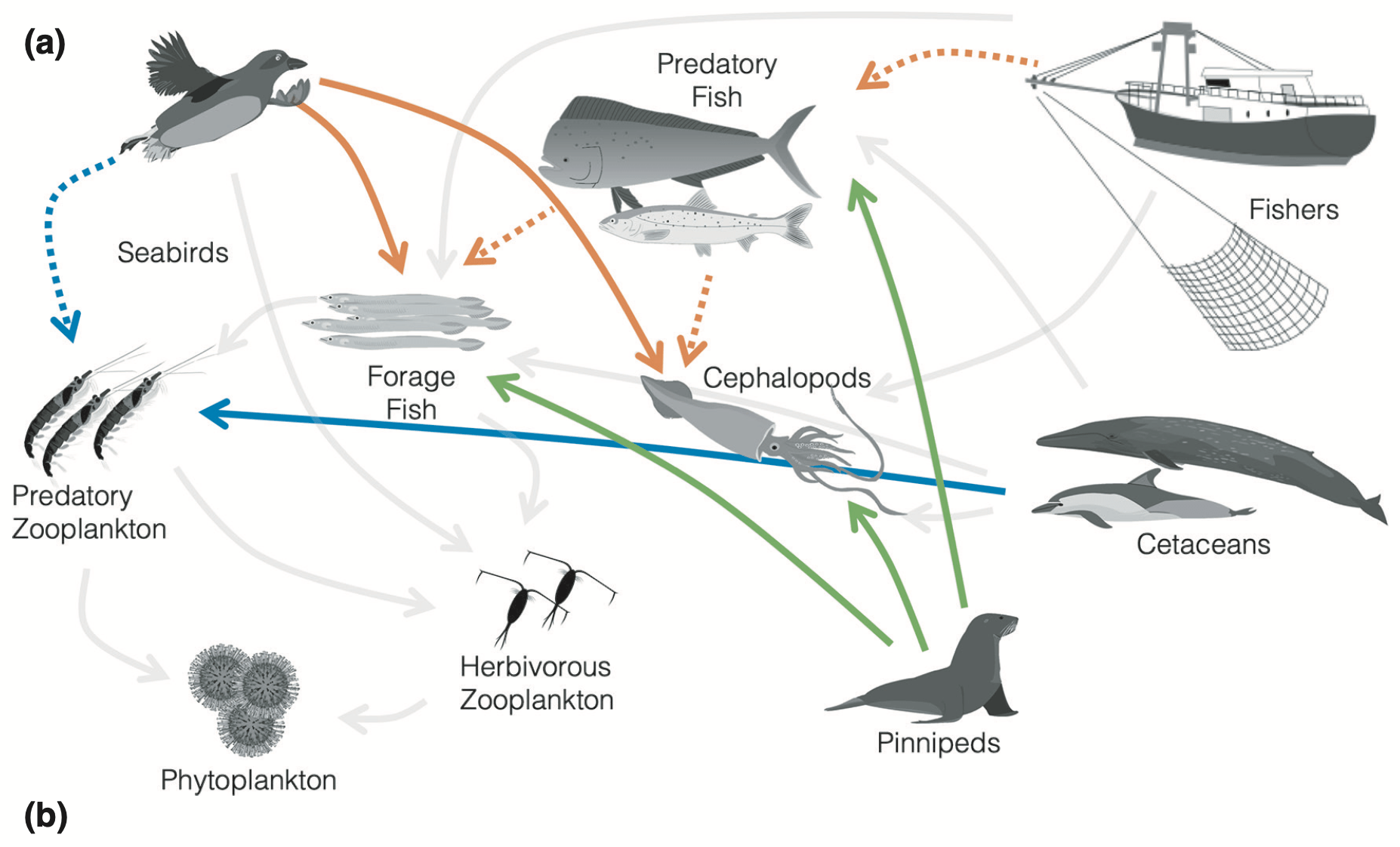 A recent review from our group at ERD highlights the ability for highly mobile predators to serve a role as ecosystem sentinels, by integrating the ocean processes around them, and telling us something we would not otherwise know about the oceanic ecosystems. In an ideal world, we’d have fine scale measurements of the ecosystem components and thresholds that result in change, but top predators respond in multiple scales, from changes in breeding success, movement patterns, to diet analyses we can understand more about ocean ecosystems and when changes are likely to occur. We hope this manuscript will both further the discussion of the roles of top predators in the global ocean observing system, but also as sentinels for rapid response, when ecosystem changes are likely to occur, and when adaptive management will be most needed.
A recent review from our group at ERD highlights the ability for highly mobile predators to serve a role as ecosystem sentinels, by integrating the ocean processes around them, and telling us something we would not otherwise know about the oceanic ecosystems. In an ideal world, we’d have fine scale measurements of the ecosystem components and thresholds that result in change, but top predators respond in multiple scales, from changes in breeding success, movement patterns, to diet analyses we can understand more about ocean ecosystems and when changes are likely to occur. We hope this manuscript will both further the discussion of the roles of top predators in the global ocean observing system, but also as sentinels for rapid response, when ecosystem changes are likely to occur, and when adaptive management will be most needed.
E.L. Hazen, B. Abrahms, S. Brodie, G. Carroll, M. Jacox, M.S. Savoca, K.L. Scales, W.J. Sydeman, and S.J. Bograd, 2019. Marine Top Predators as Climate and Ecosystem Sentinels. Frontiers in Ecology and the Environment. DOI: 10.1002/fee.2125 PDF
Climate variability and change can result in ecosystem response via trophic pathways. Trophic linkages (gray and colored arrows) are represented in a generic pelagic food web. Solid colored lines represent a direct relationship between a sentinel via the metric measured and an ecosystem component; dashed colored lines represent the capacity of an organism to function as a leading sentinel, which can be used to predict a future ecosystem response; and dotted colored arrows represent the ecosystem link that is heralded by a leading sentinel.

